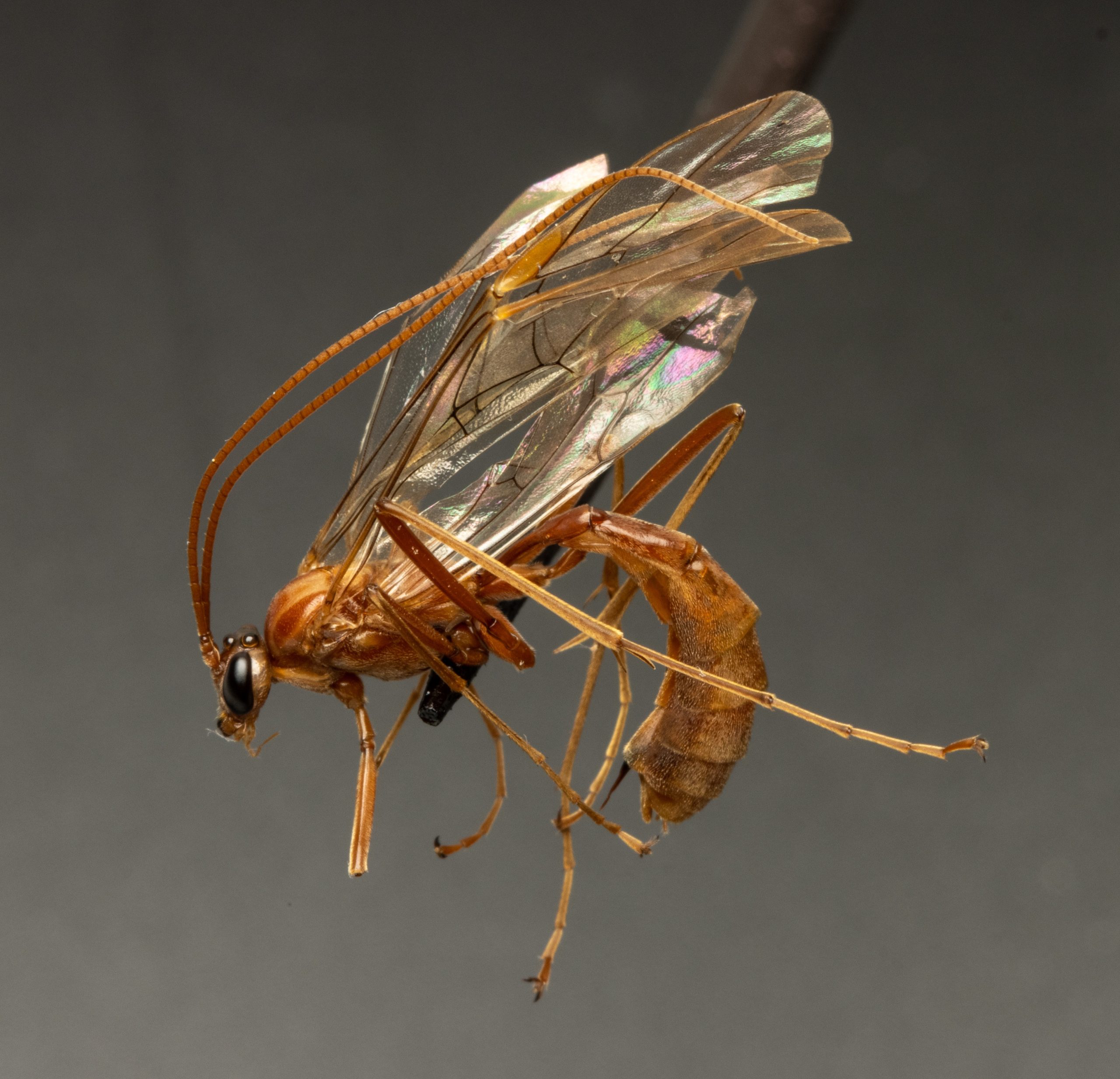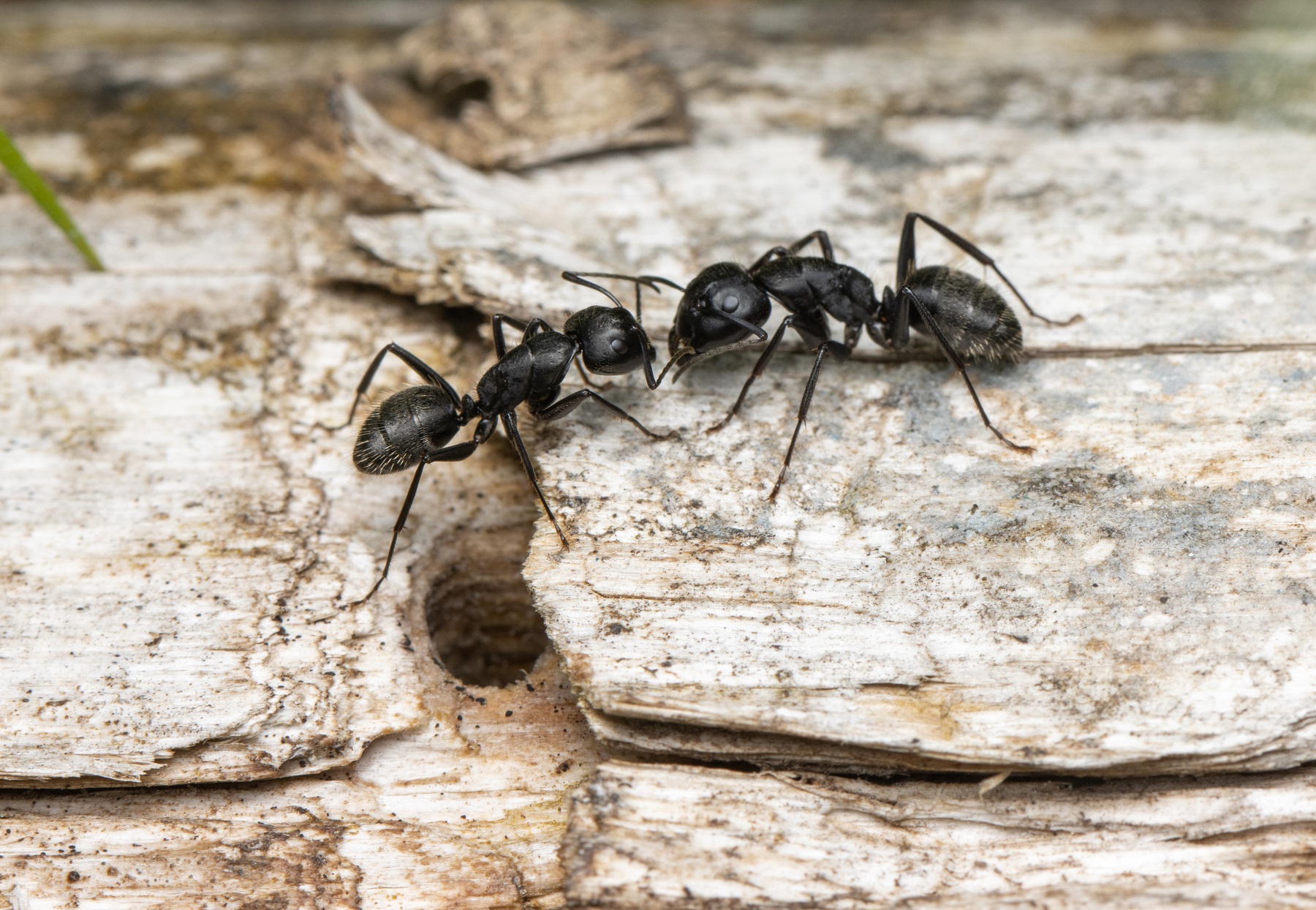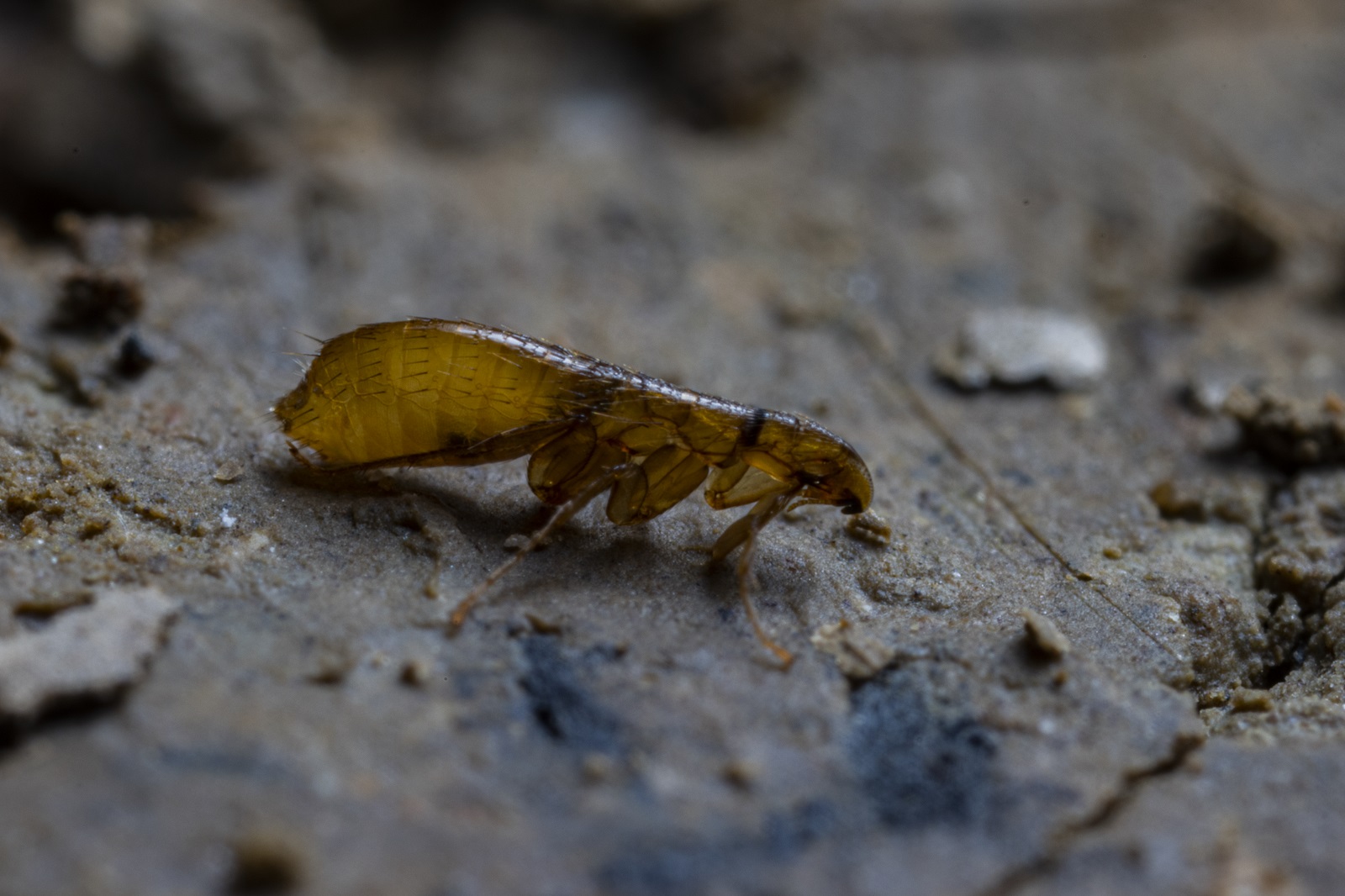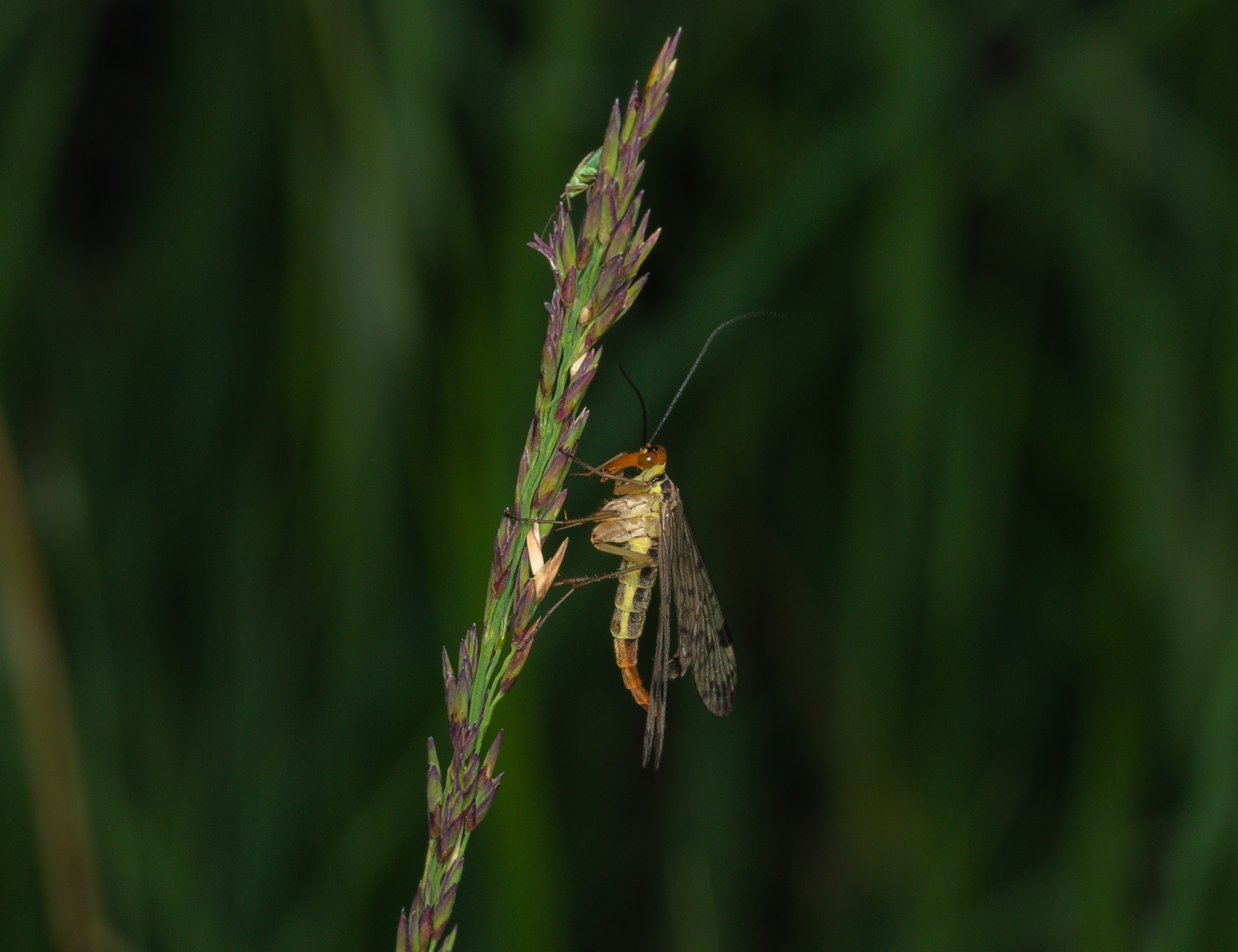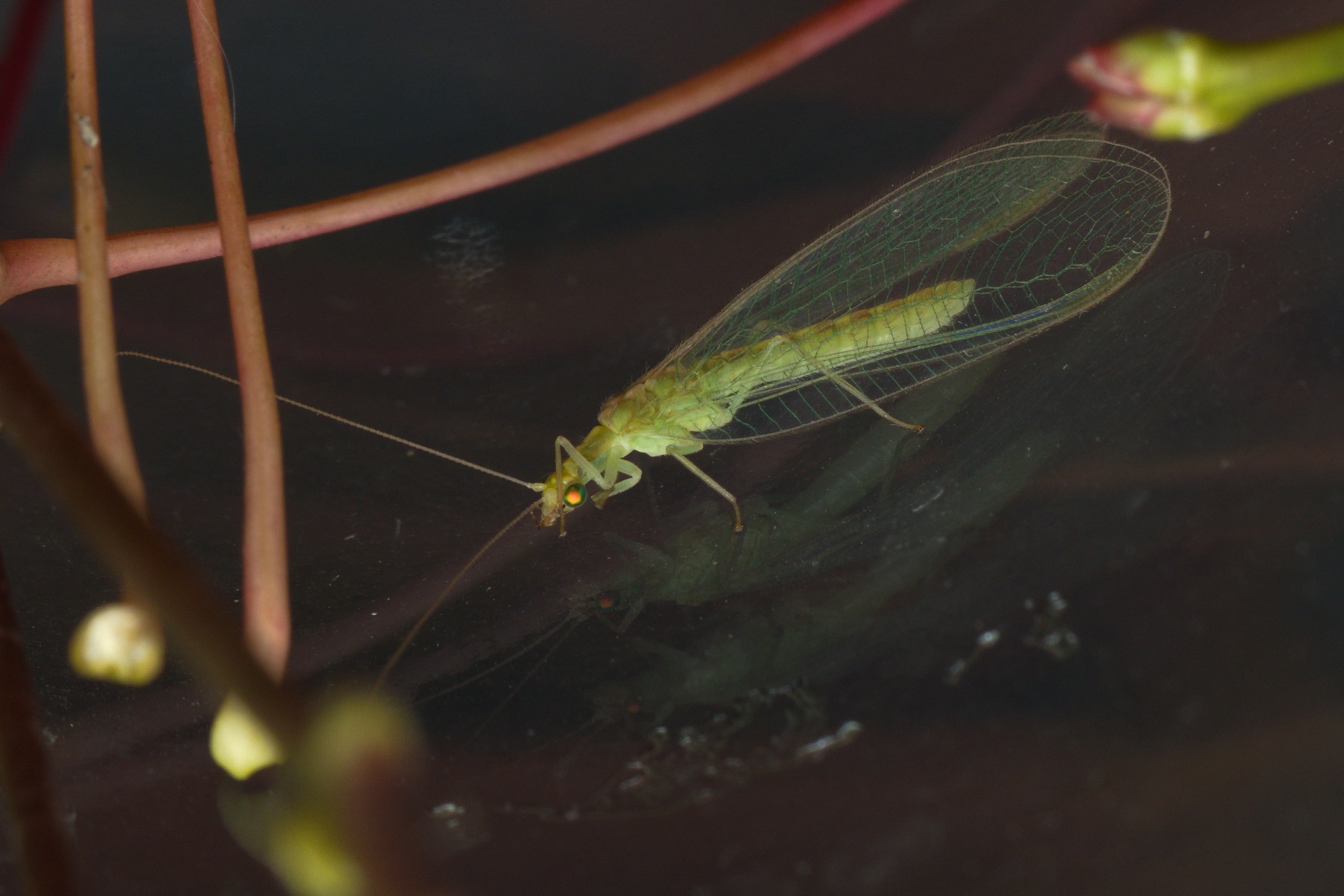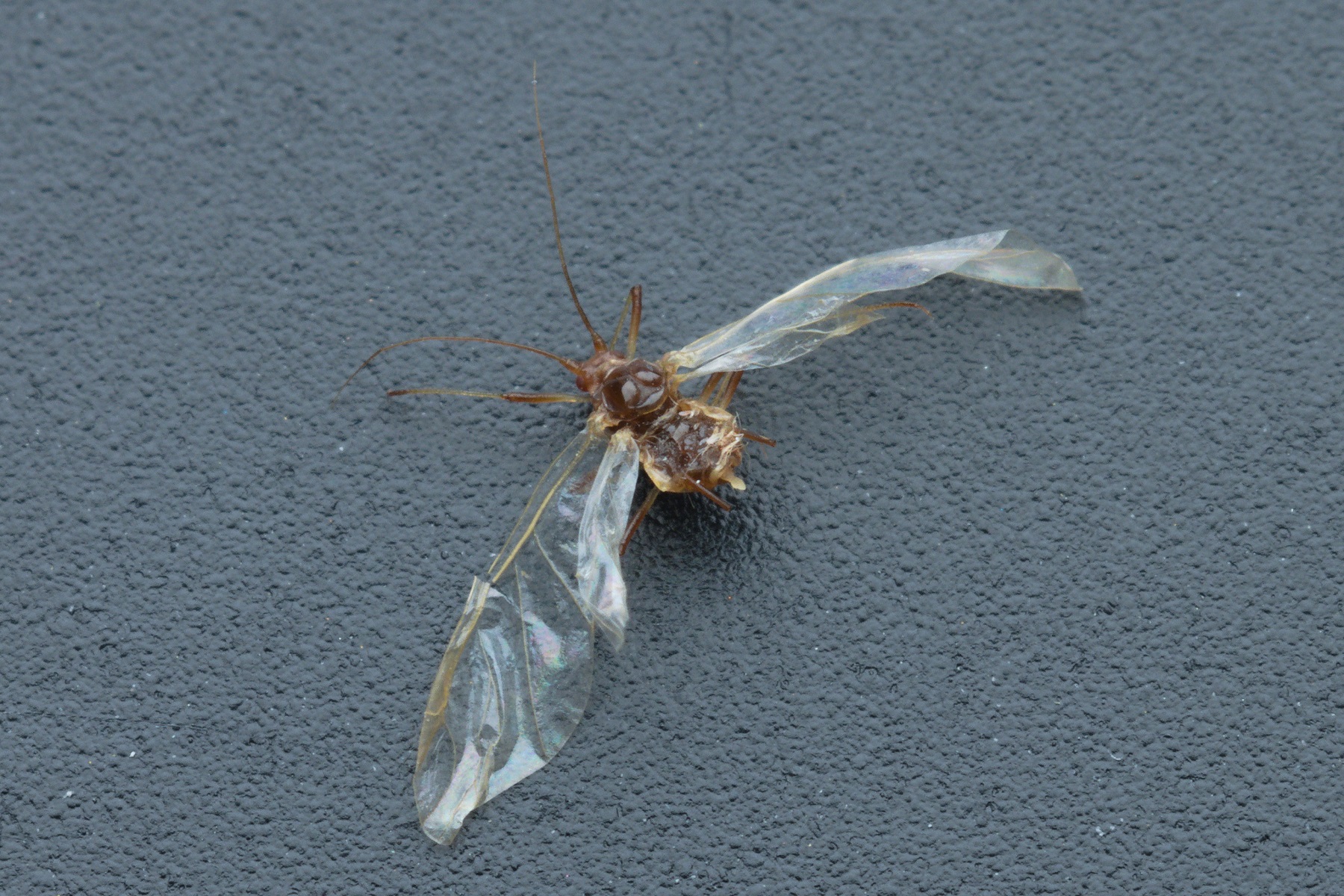Muscidae
Description
Flies are two-winged, also known as ‘true flies’. Their body is organised into a head (cephalon), a thorax with three body segments and an abdomen. On their head they have a pair of large compound eyes, a pair of antennae with three segments and the oblong limbs from the front, middle and rear jaws, which are greatly modified and form the sponging mouthparts. This consists of a proboscis (a kind of snout), at the end of which there is a pair of soft terminal pads. The thorax is centralised, the first (prothorax) and last (metathorax) segments of the thorax are smaller than the middle (mesothorax). On all three body segments of the thorax there are segmented legs, on the central body segment are large, sparsely scarred membranous wings, and on the last body segment the wings are greatly reduced and transformed into halteres (club-shaped organ). During the flight, the halteres are used to balance. There are no limbs on the back.
Biology
True flies are frequent companions of humans; they also transmit dangerous diseases such as typhus and tuberculosis. Flies are omnivorous and feed on rotting waste, carrion and dung. They first liquefy their food with digestive juices and absorb it with a lick. Flies are insects with complete metamorphosis. The eggs hatch into headless and limbless larvae. The larvae pupate after six days and adult animals hatch from the pupae after one week. The female begins to lay eggs on the third day of life as an adult; she can lay 1000 eggs in two months.
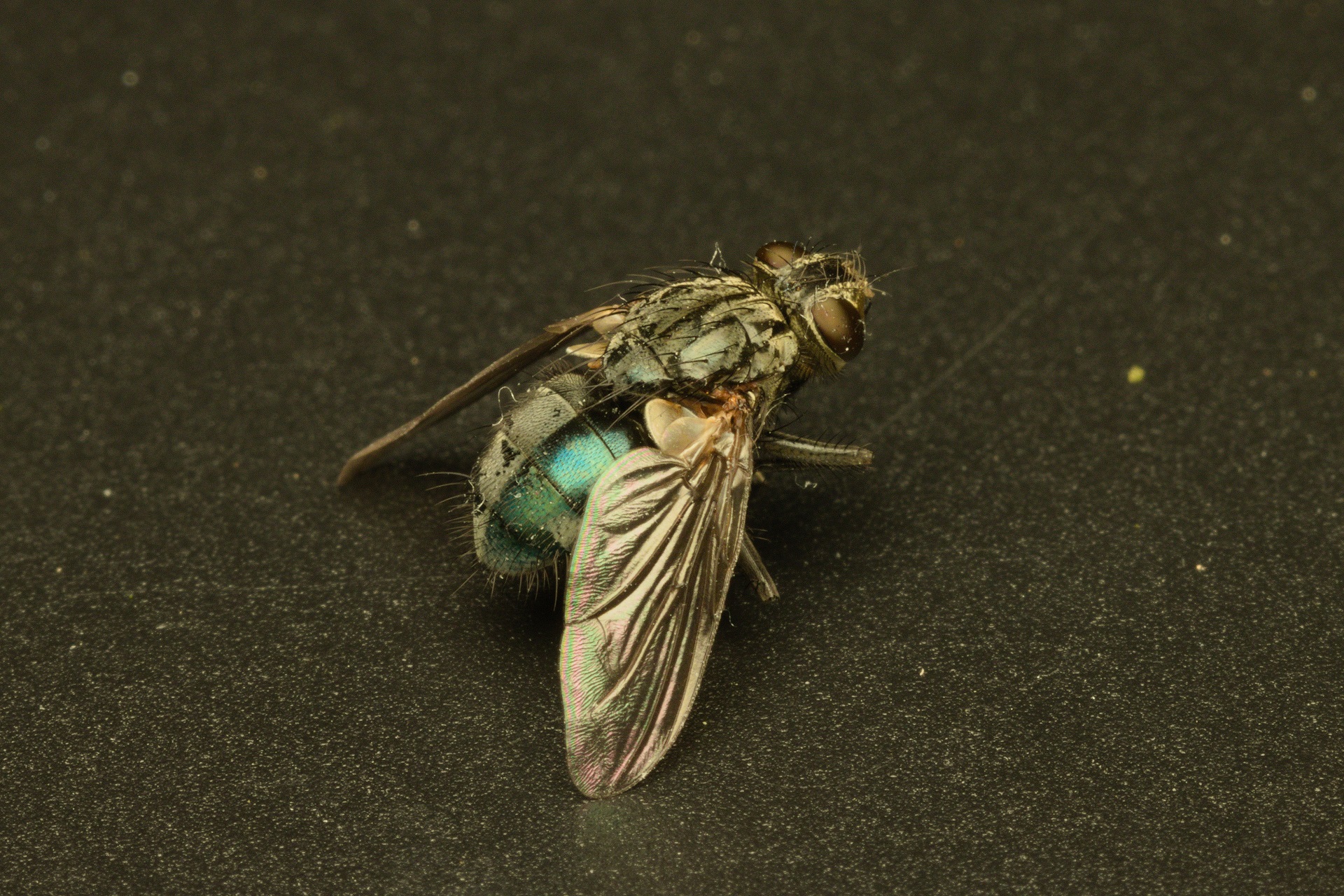
Sorodni členonožci

Authors
- Urban Bogataj,
- Gregor Bračko,
- Teo Delič,
- Cene Fišer,
- Žiga Fišer,
- Rok Kostanjšek,
- Rudi Verovnik,
- Miloš Vittori,
- Valerija Zakšek.
Students Vito Ham, Vesna Jurjevič, Gaj Kušar, and Adrijan Samuel Stell Pičman also participated in the project.
